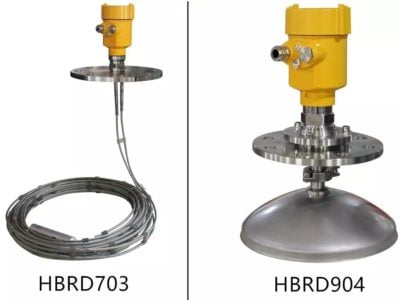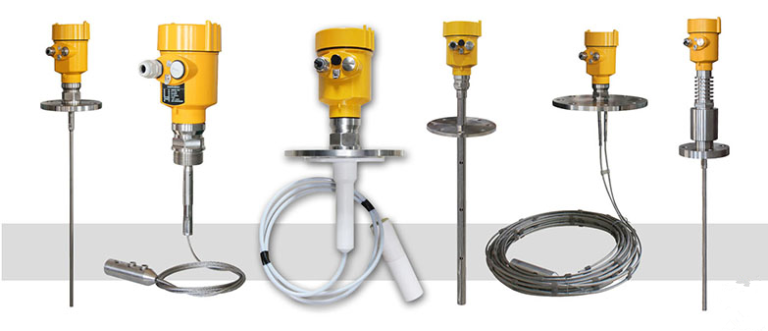Commercially available guided wave radar level meters can measure almost any liquid with a dielectric constant greater than 1.6. But what should be done if the liquid medium is less than 1.6 and the level meter is to be used for level measurement with a guided wave radar level meter?
At present, the most effective method is to add a waveguide tube, but this method is subject to certain restrictions, that is, the dielectric constant of the liquid medium should be greater than 1.3, the viscosity is less than or equal to 500 CST and does not easily produce adhesion.

This is the first point to note, in addition, to the detection component of the guided wave radar level meter, there are rod and cable types. The maximum range of the rod type is 6 meters and the maximum range of the cable type is 30 meters. For some reason, the cable type guided wave radar level meter cable is prone to swinging during operation, resulting in an inaccurate measurement. What can be done about this situation? In one case, the method used was to install a flange under the weight to reduce the oscillation by increasing the gravity under the cable.
In fact, there are other methods than this one. Remember, I’ve seen companies use tension fixing before. As for how to fix and how to fix, it is still necessary for the professional to choose the suitable fixing method according to the actual situation.

Lastly, how can a guided wave radar level meter be guaranteed to operate effectively if it is exposed to water vapor for a long time? In this case, the most effective method is to install the guided wave radar level meter in the instrument protection box.
There is a lot more to know about guided wave radar level meters, the above is only part of it, but also in the actual working conditions of the more common situations. I hope that today’s brief introduction can point out a direction for you when you encounter problems in the process of using a guided wave radar level meter.
